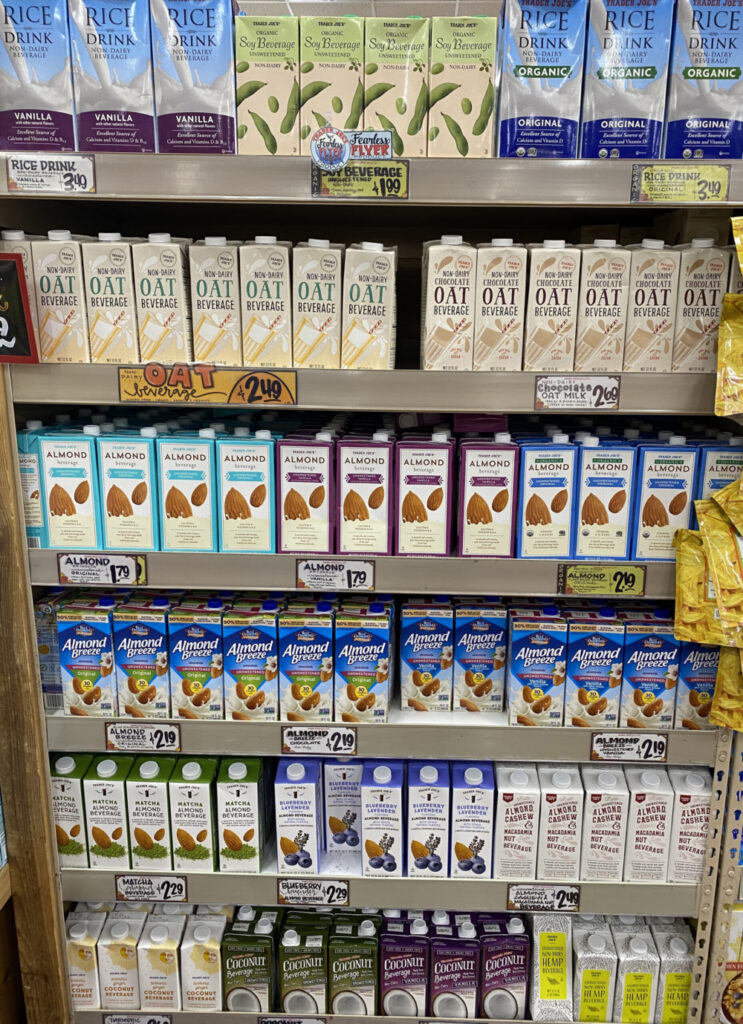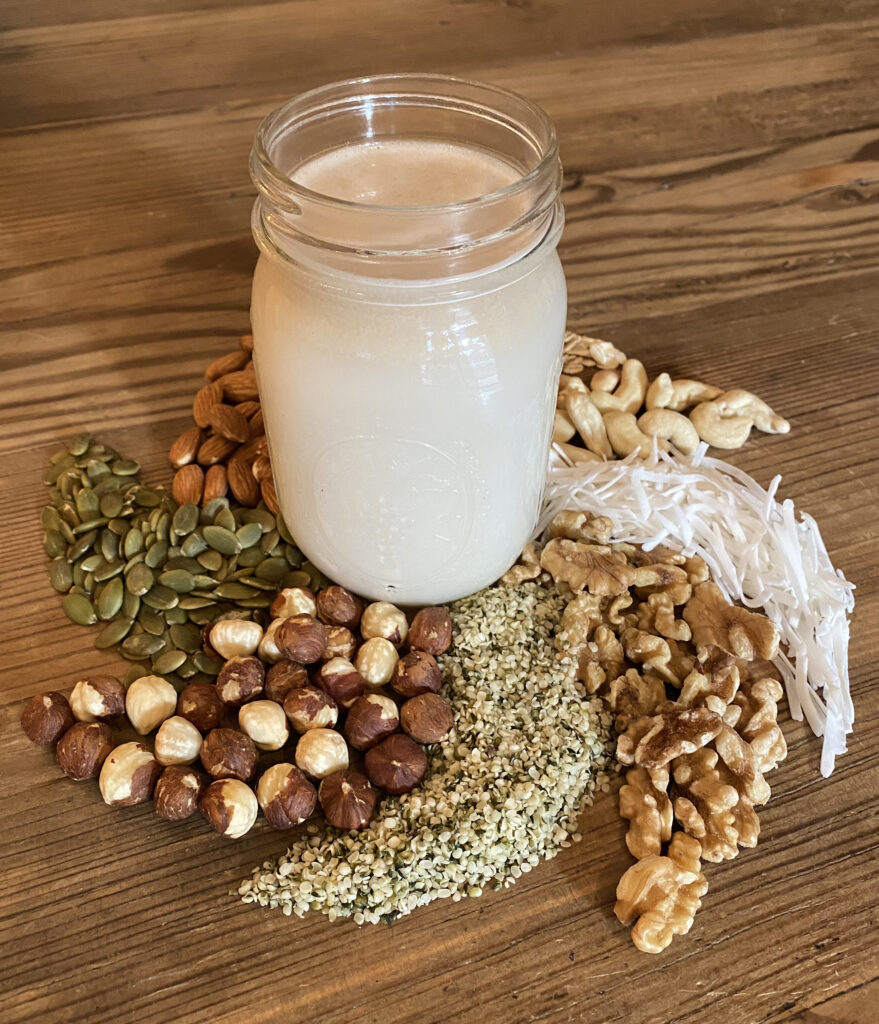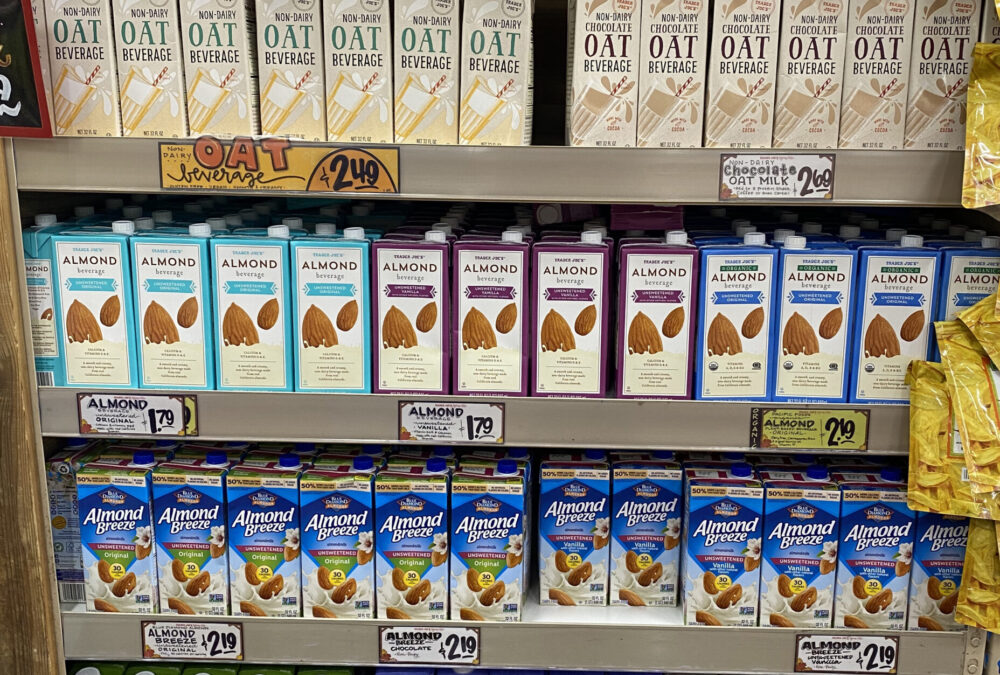
More people are opting out of dairy milk for both health and environmental reasons and there are more commercially available varieties of vegan milk than ever. My family goes through a fair amount of almond milk for cereal, for baking, and smoothies, and lately, I’ve been taking a real look at how that box of milk is made. In terms of water use, it is estimated that it takes just under 20 gallons of water to produce a glass of almond milk, but it takes about 49 gallons of water to make a glass of dairy milk.
Conventional dairy farms are much more damaging to the environment because of high emissions and a heavy impact on the land, while almond trees sequester carbon and require much less space. However, despite the benefits almonds have over cows, almonds aren’t sustainably grown. Eighty percent of the world’s almond trees are grown in drought-stricken California and they require copious amounts of water. The trees need pollination as well, so each year truckloads of bees are brought into cropland that is sprayed heavily with insecticide, contributing to the decline of our struggling bee population.
Examining the box that vegan milks come in is also discouraging. Tetra Paks are made of paper with a polyethylene liner, and to keep food fresh without refrigeration, they are lined with an additional layer of foil. While we have the capability of recycling Tetra Paks, the process is labor intensive and leaves behind raw materials of very little value. These packages are often not recycled at all and many are shipped to Mexico for recycling, adding transport to our environmental cost. The havoc wreaked by these cartons finally woke me from my contented wish-cycling.

Making vegan milk at home is quite simple. Use a high-speed blender to blend some grain, seeds, or nuts with water. Nuts usually need to be soaked for a few hours before blending, while most seeds and grain do not. The ratios are different for each, but using less water creates a creamier milk. A nut milk bag, cheesecloth, or a flour sack towel can be used to strain out the pulp to make the smoothest milk (the strained pulp can be used to add to baked goods). One or two medjool dates blended in adds a little sweetness, but you can also add vanilla extract, cinnamon, a pinch of salt, or cocoa. Add a small spoon of coconut oil as an emulsifier to keep the milk from separating; otherwise, just give it a shake before using. The milk lasts up to 5 days in the refrigerator.
Cashew milk is very easy to make and tastes delicious. The cashew tree is fairly drought tolerant, but because these nuts are native to Brazil, and are often grown in Africa or India, they add to emissions for packing and transport. The nut actually grows at the end of a pear-shaped fruit called a cashew apple. The shell around the nut contains a potent skin irritant related to urushiol, the poisonous substance that is found in poison ivy. The nuts must be removed from the shell with care and steamed to remove any trace of the irritant. This process is labor-intensive and high global demand has led to human rights abuses and low wages. Buy Fair Trade cashews whenever possible.
Hemp Seed milk is very creamy with a distinct nutty flavor. Hemp grows easily without pesticide and fertilizers and has deep roots that benefit the soil. Hemp milk has added nutritional benefits like unsaturated essential fatty acids and offers a rare, plant-based complete protein. Hemp has more protein than almond milk, but requires much less water to grow.
Soy plants have low water requirements, low carbon emissions, and fix nitrogen into the soil which reduces the need for additional fertilizers. Soy has the highest protein content of common vegan milks. It has many benefits, but most soy is genetically modified to tolerate higher levels of pesticide-use, leading to glyphosate contamination of our food and our waterways. This ubiquitous monoculture contributes to deforestation as it is grown in vast quantities for animal feed. While soy can be grown sustainably, only 3 percent of the world’s soy actually is.
Coconut trees require very little water and sequester carbon, but as demand has increased there is a higher likelihood of displacing native species and biodiversity loss. Most coconut is imported from Indonesia and Fair Trade certification is important. Coconut milk is rich and creamy with a high fat content in the form of medium-chain-triglycerides (MCT’s). Some studies show that MCT’s improve weight-loss and support a healthy metabolism. Coconuts are high in copper, magnesium, potassium, and manganese. The milk can be made by using dried coconut.
Oats require one-eighth the water of almond trees and have one-third the emissions of dairy. Oats need a little more land than a grove of almond trees, but they are far more environmentally friendly than dairy, almond, or soy. Rolled oats are best for making oat milk. Blend un-soaked oats with water for no more than 30 seconds to avoid the sliminess that can come from heating oats. Strain the liquid for the smoothest milk, but take care not to squeeze fine blended oats through the bag/cloth. Oats are very inexpensive and a half cup of dry oats makes one liter of milk. Oat milk is a thick, creamy, neutral tasting milk that works well for most purposes.
While it is clear that all vegan milks are far better for the planet than dairy, some crops are more sustainably grown than others. Making homemade milk saves package waste and helps to eliminate unnecessary thickeners and preservatives from our diet. In addition to the milks above, experiment with pumpkin seed milk, flax seed milk, or peanut milk. Each ingredient yields a different flavor and nutritional profile, and they are all easy to make.





